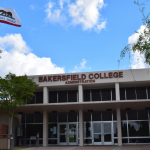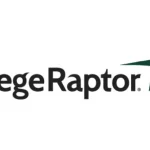A recent survey conducted by the Association of American Colleges and Universities shines a bright light on the significant long-term fiscal health challenges that colleges and universities face. More importantly, the results point toward an enterprise-wide AI-powered communications platform as one way colleges can navigate the headwinds and choppy financial waters they will face in the years ahead.
The headline result from the survey: 74% (!) of the 700 college faculty and mid-level /senior administrators surveyed in the Fall of 2020 were concerned about financial constraints going forward at their institution, as well as the long-term impact of the COVID pandemic.
While “doing more with less” has long been a common refrain within higher education over the past two-plus decades, the survey indicates that the pandemic has increased financial pressures — and accelerated the urgency to change how institutions operate in order to find a sustainable model going forward.
Other notable challenges highlighted in the survey:
- Roughly 80% were “very concerned about students’ and families’ financial needs”
- 60+% were “uncertain their institutions could handle another crisis”
- Roughly 60% felt “uneasy about drops in student enrollment and retention”
How Leaders are Responding
The top three (3) strategic priorities identified by AACU in the survey include:
- Boosting student retention and completion (59%)
- Increasing campus diversity, equity, and inclusion (57%)
- Fostering a sense of belonging and inclusion on campus (36%)
These are compelling priorities. And yet, all three of these require budgetary and time investment. How can colleges and universities make these investments when they face significant financial headwinds? Doing so requires changing how the institution operates in order to free up staff time and resources to focus on these priorities. One key area ripe for change is the digital transformation (Dx) of your communications.
A Form of Digital Transformation That Checks All Three Boxes
One way to think about digital transformation is to consider how your institution is communicating and engaging with students. Ask yourself these three questions:
- “Is my institution leveraging technology to scale the reach and impact of my staff?”
- “Are we investing in the most modern technologies, the ones with the greatest return on investment (ROI)?”
- “Can these technologies raise the ROI on the other technologies we are already investing in?”
It may be that at your institution – like most – certain forms of digital transformation are already in place. There’s likely been some investment here and there, but it’s challenging to bring it enterprise-wide.
The rise of Ocelot’s AI-powered communication platform – which includes an AI-powered Chatbot and Live Chat, and AI-powered two-way SMS text campaigns – is providing colleges and universities a quick, affordable way to scale student communications and engagement enterprise-wide, in a way that also checks the boxes for the latter two questions above around return on investment.
The Unique ROI from a AI-Powered Communications Platform
Ocelot’s AI-Powered communication platform is a quick win. It can sit above the institution’s existing technology stack. And because it is system agnostic, and comes with pre-built integrations and APIs to connect into other systems, like SIS, CRM, FAMS, and LMS, it can access institutional data in real-time to provide students and parents with more personalized experiences. For example, this type of integrated experience can include contextual awareness of where the current or prospective student is in their educational journey. This connected ecosystem immediately raises the ROI of your other systems and technology.
One Ocelot university partner recently integrated their AI-Powered communications platform with Google Analytics, and achieved a $20 savings in advertising cost per application, as well as 83% greater likelihood of an applicant to convert to an enrolled student after interacting with their AI-powered chatbot.
Another Ocelot college partner was using the chatbot prior to the pandemic. Pre-pandemic, it was the third most used support channel by students, after walk-in traffic and calls to the call center. Coming out of the pandemic, the chatbot – which is available 24/7 and is integrated with the institution’s PeopleSoft SIS – is the #1 channel for support.
The Wrap: Why is All of This Important?
Back to the three strategic priorities in the AACU survey.
First, against a backdrop of financial constraints, institutions need to focus on enrollment and retention. Students are comfortable engaging with other organizations in their life through their mobile device, through text messaging, and at all hours of the day. Colleges and universities – if they are going to successfully engage with students and provide round the clock virtual support – simply need an AI-powered communication platform.
Second, if institutions are going to serve all students, from diverse backgrounds, they need to make it easy for students from non-traditional backgrounds to access information and resources when needed. Students balancing work, school and family responsibilities may not be able to visit campus during traditional office hours.
And finally, to create a culture of belonging, AI technology can be the vehicle through which students feel they can have anonymous conversations when they want, without fear of being judged.
From the institutional perspective, when a college or university needs “to do more with less”, it needs to consider investments that generate not just ROI for that single platform or solution, but additional ROI for other technologies it uses. Moreover, institutions should prioritize investments in technology that check multiple strategic boxes. The good news is that AI-Powered communications check all three of the strategic priorities identified in the AACU survey.















